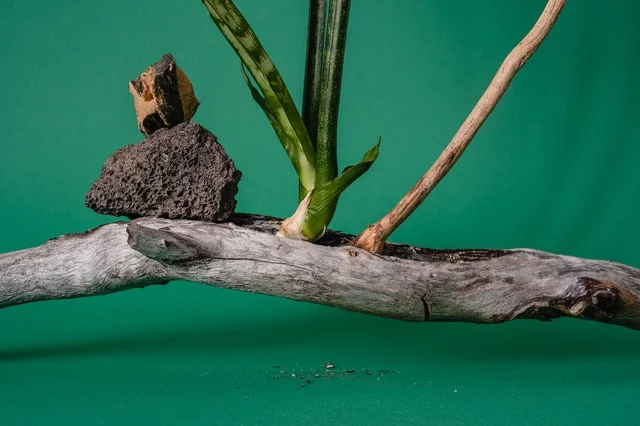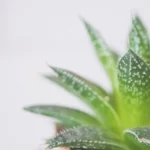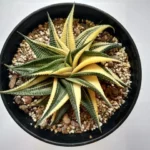Table of Contents
How To Care For Sansevieria Robusta
Are you looking for a small plant that you can fit onto your desk to make your home office feel that little bit more homely? We would recommend the Sansevieria Robusta.
It’s a bushy plant with beautiful green leaves peppered with stunning white spots. To put it bluntly, Sansevieria Robusta is the plant where the leaves have a bit of jazz.
Today, we’ll be taking a look at what it takes to look after the Sansevieria Robusta. Hopefully, this article will help you to decide if it’s the right plant for you!
What does your Sansevieria Robusta require?
The thing to remember about Sansevieria Robusta is that it is a desert plant. So you will need to take care of it. Leaving it alone and hoping for the best will not give your plant an excellent chance of survival.
However, despite how looking after a desert plant might sound, it’s much easier than you might be thinking.
Light Requirements
The best kind of light for Sansevieria Robusta is medium to bright but indirect. This will mean putting it into a room with plenty of natural light and making sure the curtains are open during the day.
To turn direct light into indirect light, all you need to do is allow some sunlight to filter. Either through other plants or through other things put between the window and your Sansevieria Robusta.
Temperature Requirements
Ideally, the temperature you will want to keep your Sansevieria Robusta at should be between 65-85F. However, if the room it’s being held in is naturally a little bit warmer, there is no harm in keeping it there.
Sansevieria Robusta is a hardy plant that can adapt to temperatures slightly higher than its used to.
After all, it lives in the desert! A bit of extra warmth isn’t going to do it any harm.
Soil Requirements
Whatever kind of soil you use for the Sansevieria Robusta, make sure it’s something that can drain well. When it’s in the desert, it’s not used to having water hanging around the roots for a long time, so make sure any excess water can quickly get out of the plant’s way.
Our recommendation would be to use cactus soil. Both the cactus and Sansevieria Robusta are used to living in desert climates. Therefore, they would have adapted to similar soil.
Humidity Requirements
Some houseplants like a bit of humidity. Sansevieria Robusta is not one of them!
There is almost no moisture in the air in the desert, so having its leaves exposed to water is not something it’s used to. In fact, putting water on where you shouldn’t be putting water on, can cause them to develop mould, which can be terrible for the plant!
How to Water
You don’t need to water the Sansevieria Robusta very often. However, giving it a light watering once every 10 days will enable it to become as vibrant as it possibly can.
Just make sure the soil has adequately drained before giving it it’s next water. Giving it too much water is one of the leading causes of root rot.
How to Fertilize
Fertilizing Sansevieria Robusta is super simple. And you only need to do it once every 1-3 months. Some plants need to be fertilized every week. But with Sansevieria Robusta, you don’t need to do it anywhere near that much.
The best fertilizer to use would be a balanced houseplant fertilizer but diluted to ½ of the strength that the bottle recommends. And as with the water, don’t overdo it! Too much fertilizer can lead to root rot also.
Extra tips for Sansevieria Robusta
Taking care of the Sansevieria Robusta is not too dissimilar from taking care of many other house plants. Here are our tips on making sure your Sansevieria Robusta is as healthy as you can possibly get it.
Pests & Diseases
Some of the most common pests that might like your Sansevieria Robusta are mealy bugs, spider mites, scale, thrips, and whitefly. When your plant becomes a buffet, it may struggle to survive. So it’s super important you deal with bugs asap.
Just a quick spray of insecticide, and all the creepy crawlies will drop dead.
You will also have some diseases to think about, such as root rot, red leaf spot, botrytis, and south blight. You should avoid getting any of these issues by not overwatering the plant and keeping it in a dry but clean room.
However, suppose your Sansevieria Robusta does get a disease. In that case, you can sort it with any fungicide that you can buy from your local garden store.
Pruning
As with most plants, Sansevieria Robusta will need pruning from time to time. Although you probably should never prune it just for the sake of pruning it, you should always be quick to remove leaves that are yellow or showing signs of rot.
By removing the rotten leaves, you’ll prevent the badness from spreading to the rest of the plant.
Make sure only ever cut with clean scissors, and whatever you do, never cut a yucky leaf open. Cutting a yucky leaf open will cause any infections to quickly spread to the rest of the Sansevieria Robusta.
Propagation
Propagating the Sansevieria Robusta is similar to most other plants; the first step is to cut off a leaf with clean scissors and wait 24 hours for the cut to dry.
Then, place the end of the leaf into a tiny pot of water and wait 3-4 weeks for some roots to form. Once you notice roots, move the plant into a small pot of soil, and wait for it to grow. As the plant grows, you will need to keep on moving it to a bigger pot.
Knowing how to propagate will help people who wish to have more than one Sansevieria Robusta in their home or give them away to their friends.
FAQ
How do you care for Sansevieria Robusta?
To care for your Sansevieria Robusta, keep it in cactus soil in a dry room where the temperature is between 65-85F. Make sure to water it once every 10 days, and give it a tiny bit of weak fertilizer every 3 months.
As long as you do these small steps, the Sansevieria Robusta is easy to look after, particularly compared to some of the other houseplants on the market!
What are the benefits of Sansevieria?
The main reason why people buy Sansevieria Robusta is quite simply because it looks nice. It can help to bring that extra bit of style of sophistication into your home office.
But what a lot of people don’t realize is that as well as looking amazing, it can also help regulate airflow in a room. It provides you with cleaner and purer air, which is good for your lungs and the rest of your body.
Can Sansevieria take full sun?
Yes, Sansevieria Robusta can take full sun! However, as we mentioned earlier, indirect sunlight will be prefered to full sun.
You can stop some of the sunlight from being full by filling your window sill with other plants or just keeping your Sansevieria Robusta somewhere a little bit further away than by the window.
But if the full sun is the best you can do, then the full sun will be 100% fine.
Should I mist my Sansevieria Robusta?
No. Nope. Nein. Nah.
Do not mist your Sansevieria Robusta. It leaves in the desert, so misting it is not something it will know how to handle, and it can ever cause the leaves to grow mould.
Is Sansevieria Robusta toxic to dogs?
Yes, Sansevieria Robusta is toxic to dogs, and people too. So make sure neither you nor your four-legged friend gets hungry and decides Sansevieria Robusta looks rather tasty.
Thankfully, anything dangerous is locked away in the leaves. So the only way this plant could possibly make you sick is if you eat it. This is not the houseplant for people who want to grow their own food!
If your dog likes to eat things he’s not supposed to, best to keep your Sansevieria Robusta on a shelf that he can’t reach.
How big does Sansevieria Robusta grow?
Although it’s unlikely your Sansevieria Robusta will reach that size, the biggest can reach up to 100cm2.
You can probably expect your Sansevieria Robusta to be around 30cm tall. Because it tends to have more height than width, it’s a great plant for people who may be limited on space.
Where is Sansevieria Robusta native to?
Sansevieria Robusta is native to certain parts of India. Despite being from such a faraway country, it does surprisingly well in American and European climates.
India has a diverse climate filled with deserts, rainforests, meadows, mountains. But Sansevieria Robusta is most commonly found in the parts of India occupied by the desert. In India, it’s more likely you’ll find a Sansevieria Robusta than a cactus.
Is Sansevieria Robusta a snake plant? Also, what is a snake plant?
Yes, Sansevieria Robusta is a snake plant. Snake plant is a broad category of house plants. Usually, they have large, waxy leaves, and it’s rare for them to have flowers.
The name “snake plant” comes from the fact that most of their leaves resemble the scales of a snake. There are currently 30 types of snake plant, but unfortunately, not all of them make ideal houseplants.
If you like plants with flowers, I’m afraid snake plants probably won’t be for you.
Photo by Marina Leonova from Pexels



